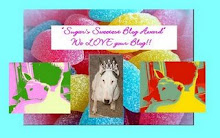 I was on the BuyGreen.com website the other day when I came across their green standards. Wow! I was blown away with how detailed they are about all the products they sell. They review each product and rate it with respect to the environmental impact it has. They look at the source material used to create the product, how the product was manufactured, how the product will be used, and how the product will be disposed of when it can no longer be used. Every item has a rating along with one to four of the symbols shown below and detailed information about the rating. The people at buygreen.com have really done their homework about the products they sell and you can be sure that anything you buy from them is good for the environment. This 'cradle to grave' perspective should be the standard by which all products are produced and consumed.
I was on the BuyGreen.com website the other day when I came across their green standards. Wow! I was blown away with how detailed they are about all the products they sell. They review each product and rate it with respect to the environmental impact it has. They look at the source material used to create the product, how the product was manufactured, how the product will be used, and how the product will be disposed of when it can no longer be used. Every item has a rating along with one to four of the symbols shown below and detailed information about the rating. The people at buygreen.com have really done their homework about the products they sell and you can be sure that anything you buy from them is good for the environment. This 'cradle to grave' perspective should be the standard by which all products are produced and consumed. Following are the green standards from the BuyGreen.com website. I know that this information is overwhelming at first, but take it slow. There is so much to think about that you may think that you can't buy anything if you have to follow these standards. The idea is not to turn you off of buying what you need but just to make you aware and get you thinking. You may not even realize that some things you buy every week at the store are not only bad for the environment but also bad for you. If everyone keeps these things in mind when they shop we can ensure a future for our planet. Please do your part because we are all in this together.
Following are the green standards from the BuyGreen.com website. I know that this information is overwhelming at first, but take it slow. There is so much to think about that you may think that you can't buy anything if you have to follow these standards. The idea is not to turn you off of buying what you need but just to make you aware and get you thinking. You may not even realize that some things you buy every week at the store are not only bad for the environment but also bad for you. If everyone keeps these things in mind when they shop we can ensure a future for our planet. Please do your part because we are all in this together. Source Material: Simply put, what is the product made from?
Toxins: Are there any Toxicants? This is a minimum standard. If there is a prohibited toxicant that is present, or that toxicant exceeds our allowable dosages, the product will NOT be sold on BuyGreen.com.
Raw material: What is the product made from? We look at three potential types of source materials and assign a percentage to each area. Each of these three sub-elements receive a proportional score based on the percentage of the content.
Natural and Organic: Is the content Natural? This is intended to be broadly interpreted. Next we ask, is the content Organic? If it meets this first requirement, it then may also receive additional credit for being Organic too. As an example, Cotton is Natural and can be Organic too.
Sustainable: Is the material from a sustainable source? To score for this element, there must be some percentage of sustainable content. As an example, bamboo is a source material that has good sustainable qualities.
Recycled: How much of the content is made of recycled material? And how much of the recycled material is Post-Consumer? These are measured as a percentage. As an example, there are a number of products that are made from recycled paper, or chopsticks or old billboards as just a few potential materials that get used again in BuyGreen.com products.
Sustainable: Is the material from a sustainable source? To score for this element, there must be some percentage of sustainable content. As an example, bamboo is a source material that has good sustainable qualities.
Recycled: How much of the content is made of recycled material? And how much of the recycled material is Post-Consumer? These are measured as a percentage. As an example, there are a number of products that are made from recycled paper, or chopsticks or old billboards as just a few potential materials that get used again in BuyGreen.com products.
Manufacturing: How is the product manufactured?
Animal Testing: is there any testing done on animals? This is a minimum standard and is an absolute. If it fails this sub-element, it will NOT be carried on BuyGreen.com irrespective of any other attributes.
Resource Consumption: does the manufacturing process have an adverse impact on resources - as it relates specifically to the overall manufacturing process. In other words, are there additional resources required in the manufacturing process? If there are, how does this compare to traditional Manufacturing methods for like products? A good example is paper manufacturing which is resource intensive and requires the significant use of water as one example, to manufacture the product.
Energy Consumption: what is the energy required to manufacture and deliver the product? We look at this from two perspectives, Product Production, and Transportation and Shipping. As an example, we have a manufacturer that takes scrap wood from a local lumberyard and uses it to generate electricity through steam. This manufacturer has gone to considerable lengths to reduce their traditional energy consumption. There are certainly many other good, but less involved examples from suppliers we work with today.
Pollution: what is the impact of manufacturing as it relates to polluting our environment? We look at this from two perspectives, Air and Water. The comparative impact on both air and water will each receive a rating. As an example, one of our manufacturers has a closed loop water process and has essentially eliminated their water pollution. Further, they have significantly reduced their water consumption as an added benefit to adopting this process.
Packaging: how much packaging is used and what is the packaging made from? We have a number of manufacturers that have eliminated traditional packaging, or significantly reduced the amount they use today. Using recycled or sustainable materials for your packaging are good ways of creating a positive impact from a comparative perspective to traditional products.
Company Evaluation: how does the company approach what we believe are their four 'key stakeholders'; their customers, employees (including workers in their supply chain), the environment, and the communities in which they do business? This is an absolute measure and either they meet our minimum requirement, or they do not. There are a number of other organizations that provide and accreditation that also looks at all four stakeholders or portions there of. We provide information about these additional certifications when it applies to a given rating.
Reduce or eliminate material consumption: does the use of this product reduce or eliminate consumption of other materials? Reusable water bottles are a good example of some potentially significant reduction or elimination of the massive amount of plastic bottles we use as a society today. This example can also have an impact on the next area of review, trash production.
Reduce or eliminate trash production: does the use of this product reduce or eliminate trash? As an example, we have a product that instead of needing to be disposed of, can be used as compost or fertilizer when its intended usage is finished. There can also be a qualitative component to this element. For example, corn based products that are alternatives to traditional petroleum products, have a better outcome when disposed of using traditional methods.
Reduce or eliminate toxicants in the environment: does the use of this product reduce or eliminate toxicants? As an example, we carry paints that as compared to traditional products, contain significantly less toxicants. Another example are a number of personal care products that also have significantly less, if any toxicants at all.
Reduce or eliminate energy consumption: does the use of this product reduce or eliminate energy consumption? As an example, a number of our Solar products eliminate the need to use electricity.
Bio-degradable: does the product bio-degrade after it is disposed? We have numerous products that are bio-degradable when disposed of and this is clearly better than traditional equivalent products that don't bio-degrade, or do so over significantly long periods of time. Across all the products we offer, there is a range of how long some of these products take to bio-degrade, but only in a few examples is it longer than a year, and none nearly as long as a traditional product. Further, there are a few organizations that provide their own accreditation and when those details are available, we will pass that information along to our customers.
Recyclable: can this product be recycled? This sub-element is two pronged, meaning either it can or can not be recycled. If Yes, what percentage of the product is recyclable? This element too has numerous examples of products that can be reused for either the same product, or something new. There are of course numerous potential scenarios that may create a condition where a product that can be recycled, does not actually get recycled. We provide significant weight to the characteristic that create the ability for the product to actually be recycled.









4 comments:
Great information Stubby!
Thanks, we like your blog.
Sequoia and Petunia pug sisters
Hi Sequoia & Petunia - Thanks for stopping by. I'm glad you liked the information because it is very important. Please pass it along to everyone you know.
I am going to head over to your blog to check it out.
Stubby xoxo
Stubby,
You are so wise! We are so glad to have you to teach us all of this important stuff.
Mom wants you to know that she is going to write an angry letter to the manufacturer of this whole wheat orzo that she bought. The amount of packaging was ridonkulous!
Happy Tuesday Buddy!
Love,
S-Dog
Salinger - Good for your mom for writing a letter to the manufacturer. Only when people stand up and say "We're not going to take it anymore" will businesses stop doing what they're doing. Everyone has a voice and it needs to be heard!
Stubby xoxo
Post a Comment